Truth be told: I’m a huge fan of apocalyptic or dystopian fiction. Or, a fancier term, ‘speculative fiction’. Meaning the ‘what ifs’ in life; what if there was a pandemic, a nuclear explosion, or some cataclysmic event that creates a VERY challenging world for those left behind.
I’m no writer, but if I was, I think an interesting topic that could jump start one of these novels would be the elimination of pollinators from our natural world. Oh, wait. That is already happening. Let’s consider the bees. We, and I’m including myself in this collection, are terrible for bees. We’ve caused pollution, we’ve destroyed a lot of their habitat and the use of certain pesticides have threatened their existence. There is also the issue of a parasitic mite that is a huge contributor to their decline.
Bees. Did I mention that we can’t live without them?
So, back to the basics of Earth Science. Or, Sex Ed depending on what school district you grew up in (it seems Sex Ed now for many young adults instead of a class environment, it’s left up to their own experiences and viewings of risky websites, which is able to distort how sexual intercourse truly is in reality). Pollination is basically the transfer of pollen grains from the male anther of a flower to the female stigma of another flower. When this process is successful, you have fertilization. Basically, a seed develops that produces a fruit and we eat. A very simple act that guarantees the continuation of the planet. Flies & other insects also pollinate plants, although bees are the most important.
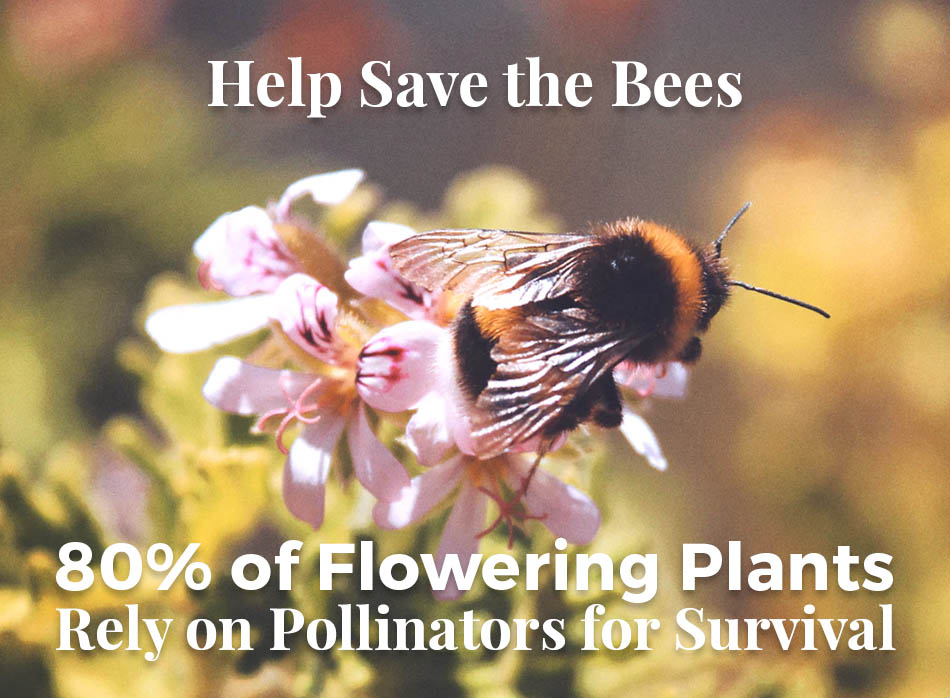
Bees are the critical link in our food chain – they are the most prolific pollinator in the insect world. More than 30% of our food crops depend on pollination by bees to produces fruits and seeds. Additionally, 70% of all the food we eat benefit from pollination.
Pollination is a very simple process but a very important one; it is the process by which pollen is transferred from the male part of the flower (anther) to the female part of the flower (stigma).
Remove one of the key players, bees (the pollinator), and we are in a heap of trouble. 80% of all flowering plants rely on pollination for survival. That’s a lot of food we’d be missing on the table.
Help Save the Bees
As gardeners, as environmentalists or conservationists or just people who care, we really need to help the bees. I’m not sure where the folks at the top of the food chain are heading when it comes to our natural world, so for the here and now, I’m doing all I can to protect and conserve my little patch of home. But, since I do have A LOT of plants that attract and support pollinators, I’m asking my friends to join me in providing support in their gardens too!

More Photos of Our Pollinator Friends, Bees
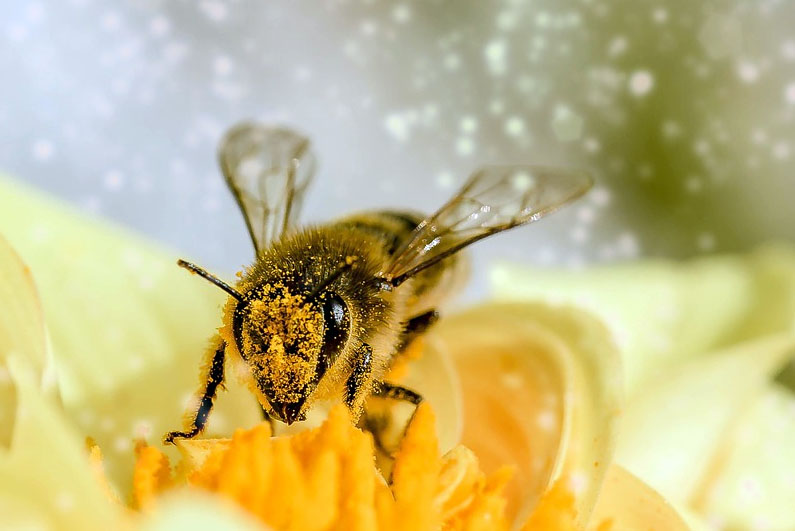
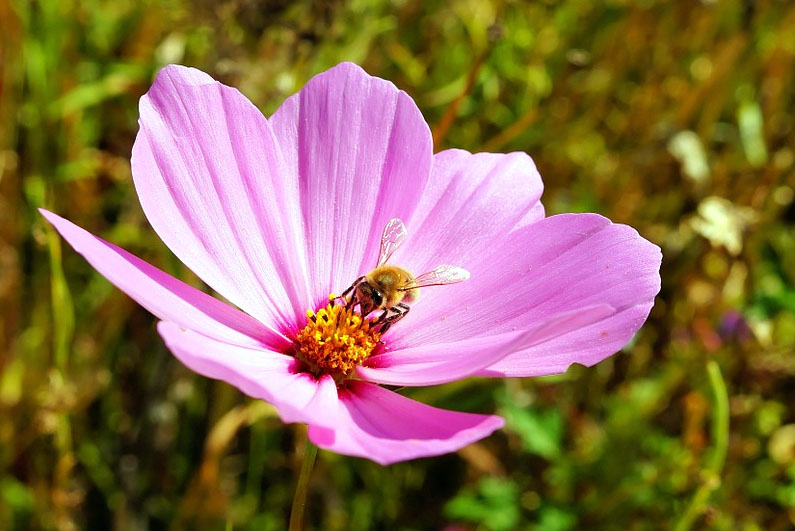
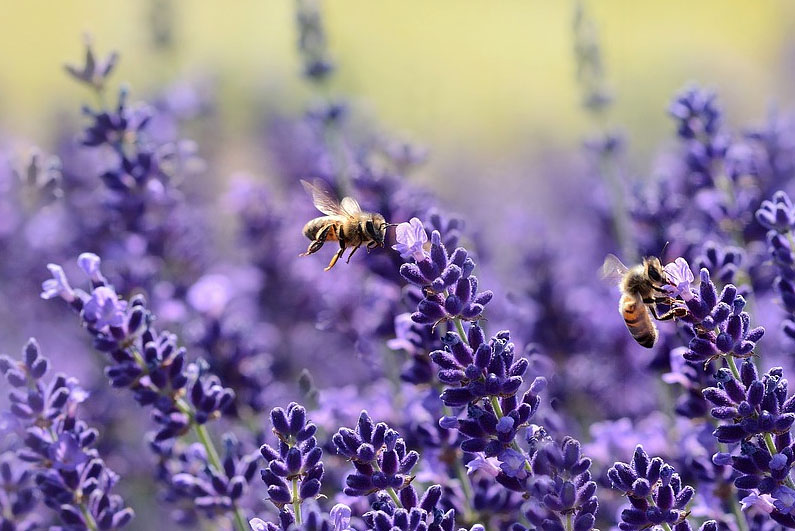
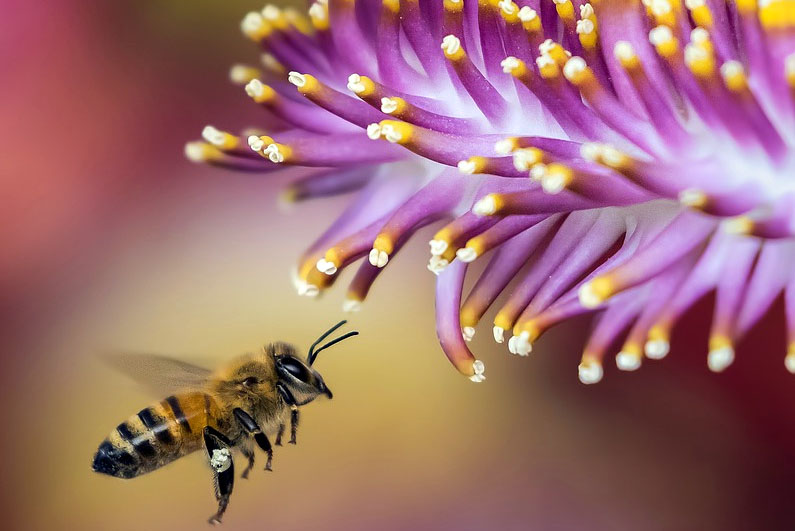

I live in Tampa, Florida and have 2 bee hives. I have tried planting many plants that bees are supposed to like but they ignore them.
I would find it helpful if there was a way for me to specify my zone instead of looking individually at the 120 bee-friendly plants you have listed.
I have seen bees on Russian Sage and would like to order now but by the time you will have shipped in the Spring it is too hot here. Sage dies out here in the Summer heat. The time for me to plant them would have been February 1st. Today it will hit a high of 83 degrees.
Steve
Steve,
Consider planting a succession of perennials for the bees. Rosemary is a shrub that grows very well in the hot SW summer desert. Just give it good drainage. All winter it has these little blue flowers that are adored by the bees. There are upright and prostrate forms. Calendula is not a perennial flower, but it freely self-sows. Did well in a Midwestern garden last summer. It likes moisture, like the herby sages. During the hottest part of the year, they like their “feet” wet. By sages, I’m assuming you’re referring to the red and blue stalk varieties. There are many sages, and some are adapted to dry environments.
He said he lives in Tampa, FL. Tampa, FL is not in the SW. It’s in the SE
p.s. Russian Sage is a perennial, and it will need supplemental water its first summer only. Plant it in the Fall, and it’ll survive on its own in the summer. It becomes more drought-tolerant as it ages.
I’ve found that holy basil (Ocimum tenuiflorum/sanctum) draws honeybees (and other pollinators and beneficials) like crazy. It’s heat-loving and a heavy bloomer—so ought to be right up your alley. (Bloom time could no doubt be extended with a bit of judicious trimming, but thus far I’ve left mine in their natural state and they bloom much of the summer.) It’s definitely an annual in my zone (6b), but might make it as a short-lived perennial in Tampa. They readily self-sow in my experience. The flowers of other basils seems attractive to bees, too, but holy is bee candy.
It is the mites. What can we do about the mites? Only places like Newfoundland and Australia have healthy bee populations
Oxalic acid vapor treatment treats against 90% of Varroa in the hive when done when there is little or NO broad – since 85% of the Varroa live, feed on larva and multiply and procreate in the broad cells, the oxalic acid vapor treatment should be done when there is little to no brood in the hive. Here in Colorado it is in the winter…. if you provide your email to me, I will send you picture of the tool you can make your self with a piece of copper tube and a long skinny brass tube and heat tape. You need a small flame torch to heat up the oxalic acid. Use only the pure oxalic acid, I can provide the information, pictures, details and instructions. My email is: ctschiem@msn.com – I am in Aurora, Colorado we have four Top Bar Hives and one Langstroth hive….. we will be moving to Satellite Beach, Florida end of next year and I need to find a bee keeping club down there….. Thanks, Carola
Modern bee keeping methods are contributing to mite susceptibility, in particular artificial insemination of queens and replacing queens unnecessarily. In short, both practices prevent a colony from selecting the strongest queen and then passing on her genes to the next generation.
Beekeeping, modern day, is focused on maximum honey production not healthy bee populations. If you are interested in more cooperative ways to bee keep, look into The BareFoot Beekeeper’s methods.
Unfortunately the insect on the flower at the top of this page (with the “80% of all plants” legend) is a fly, not a bee. Well, flies are important pollinators too. So are several other kinds of insects.
The beekeeping I know here in California revolves around pollinating fruit and nut trees. Honey production is secondary. All of my beekeeper friends are struggling.
When we speak of bees as pollinators, most people think of the honeybee – a semi-domesticated insect of Eurasian origin, not native to the New World so far as I know. Less well known are the literally hundreds of species of wild bees who play an absolutely essential role as pollinators (and in the food chain). Many people are aware of bumblebees, some species of which are now critically endangered, but few are aware of the many species of smaller, less conspicuous bees – some living in colonies, some solitary – that play an equally important role in our ecosystems. Honeybees pollinate a limited selection of plants. Many others are dependent on other kinds of bees – and sometimes on flies, beetles, wasps etc. Certain figs, for example, are pollinated by nearly microscopically tiny wasps – without the wasps, no figs.
It’s so easy to underestimate the complexity and elegance of natural ecosystems – and even easier to disrupt them without even being aware of it. Wild bees are one of the almost unseen but vitally important ecosystem “players” that we ignore at our peril.
Thanks for this. My favorite native North American fruit, the pawpaw (Asimina triloba), is entirely dependent on flies and beetles for pollination. The “unseens” are one reason I try to plant a wide array of native (to my area) flowering plants: milkweed, butterfly weed, Joe Pye weed, cardinal flowers, great blue lobelias, cone flowers, black-eyed susans and the like. Some introduced plants are also beloved by indigenous beneficials. I find, for instance, that celosia/cockscombs are attractive to leatherwing beetles, who do double duty as pollinators and predators.
Right on, John,
Bumble bees used to frighten me as a child although I was never stung by one. Now that I am a gardener I learned that they don’t live in hives and are able to vibrate their wings at just right frequency to facilitate TOMATO plant pollination. A fresh garden grown tomato is definitely one of MY favorite “fruits.” You grow some great tomatoes out there in CA.
Another suggestion would be to set up a bee hotel/motel. This can be done by drilling different sized holes in logs and other large chunks of wood. There are probably detailed instructions on the web for the optimum sized and depth of holes. An alternative is to have a bundle of short length bamboo sticks with varying narrow diameters. Fishpole bamboo is a clumping bamboo that is good for this kind of ‘housing.” Be sure to poke out the nodes so the bees can have full use of the tube, but leave at least one to protect the back of the nest.
More people should look into the work of this woman, Valerie Solheim, who is (in my view) on a “Mission from God” (Blues Bros.) to help save the bees. Her methods may be seen as somewhat (quite!!) unorthodox, but she has more than proved them out to her satisfaction.
It would be a fairly simple matter for the Herb Exchange to set up some kind of discount or mutual packaging for her products with large herb & flower orders for bee lovers and bee keepers. Not to mention, testing it out in their own growing areas.
I suspect that the larger eco system, not just the domesticated honey bees, would likely see benefits from her approach. I am not a shill for this company, just a gardener who is impressed with learning about this woman’s work and the absolute sincerity of her intent to spread the benefits of her discovery (discoveries) to those willing to give it a try. https://www.honeycolony.com/article/beehive-effect-spiritual-healing-field/
i live in Texas now and I have planted cinnamon basil and the bees go nuts over it. I have tried to find someone willing to put hives on my property but no luck so far .i have never seen so many bees at one time, so I thought getting hives would be a good idea. gonna keep trying.
My neighbors hire exterminators to kill the bees in my area 🙁 There was no way to convince them to find a professional beekeeper to remove the enormous hive.